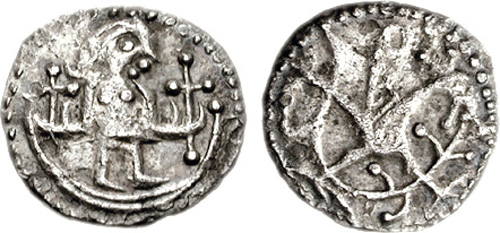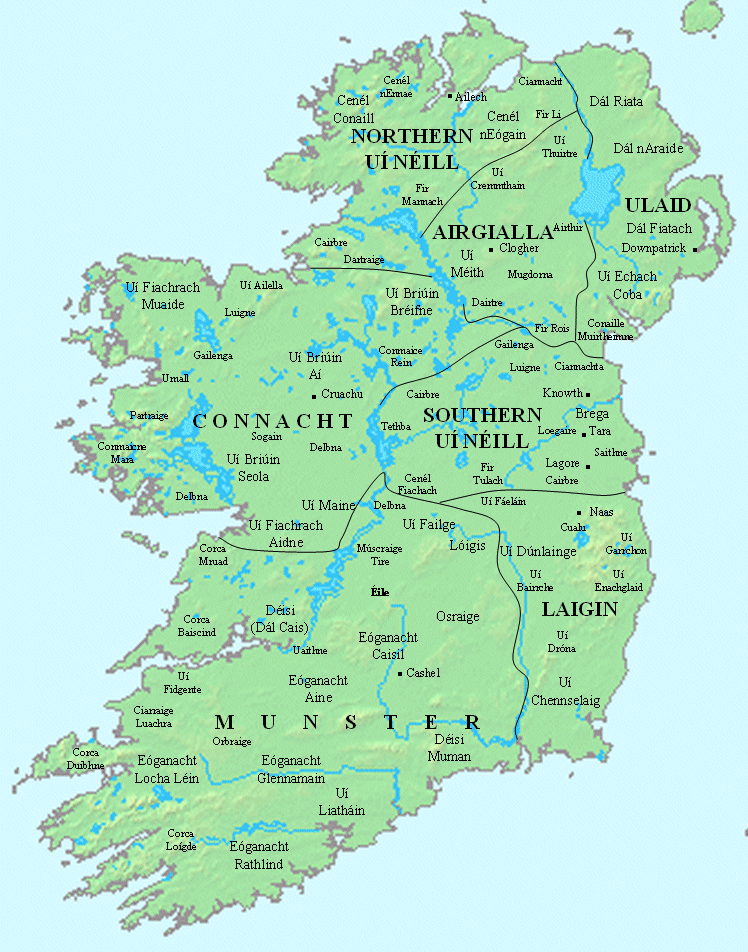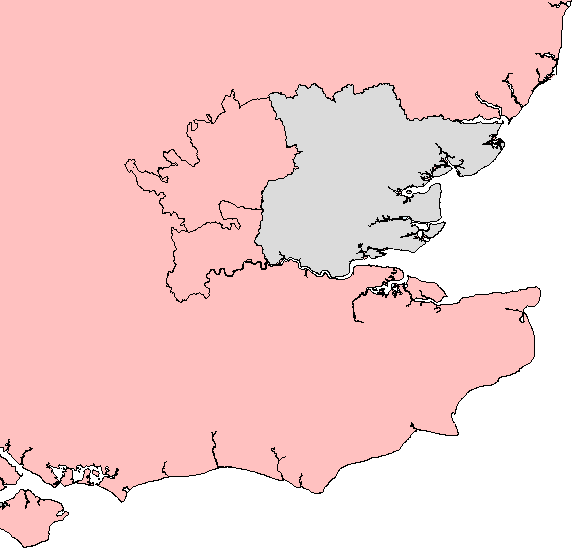|
Sceat
A ( ; ang, sceatt , ) was a small, thick silver coin minted in England, Frisia, and Jutland during the Anglo-Saxon period that normally weighed 0.8–1.3 grams. History Its name derives from Old English ', meaning "wealth", "money", and "coin", which has been applied to these coins since the 17th century based on interpretations of the legal codes of Mercia and of Kent under its king Æthelberht. It is likely, however, that the coins were more often known to contemporaries as " pennies" ( ang, peningas), much like their successor silver coins. They are very diverse, organized into over a hundred numbered types derived from the British Museum Catalogue of the 1890s and by broader alphabetical classifications laid out by British numismatist Stuart Rigold in the 1970s. The huge volume of finds made in the last thirty years using metal detectors has radically altered understanding of this coinage and, while it is now clear that these coins were in everyday use across eastern ... [...More Info...] [...Related Items...] OR: [Wikipedia] [Google] [Baidu] |
Runic Inscription
A runic inscription is an inscription made in one of the various runic alphabets. They generally contained practical information or memorials instead of magic or mythic stories. The body of runic inscriptions falls into the three categories of Elder Futhark (some 350 items, dating to between the 2nd and 8th centuries AD), Anglo-Frisian Futhorc (some 100 items, 5th to 11th centuries) and Younger Futhark (close to 6,000 items, 8th to 12th centuries). The total 350 known inscriptions in the Elder Futhark script fall into two main geographical categories, North Germanic (Scandinavian, c. 267 items) and Continental or South Germanic ( "German" and Gothic, c. 81 items). These inscriptions are on many types of loose objects, but the North Germanic tradition shows a preference for bracteates, while the South Germanic one has a preference for fibulae. The precise figures are debatable because some inscriptions are very short and/or illegible so that it is uncertain whether they qualify as ... [...More Info...] [...Related Items...] OR: [Wikipedia] [Google] [Baidu] |
Aldfrith Of Northumbria
Aldfrith (Early Modern Irish: ''Flann Fína mac Ossu''; Latin: ''Aldfrid'', ''Aldfridus''; died 14 December 704 or 705) was king of Northumbria from 685 until his death. He is described by early writers such as Bede, Alcuin and Stephen of Ripon as a man of great learning. Some of his works and some letters written to him survive. His reign was relatively peaceful, marred only by disputes with Bishop Wilfrid, a major figure in the early Northumbrian church. Aldfrith was born on an uncertain date to Oswiu of Northumbria and an Irish princess named Fín. Oswiu later became King of Northumbria; he died in 670 and was succeeded by his son Ecgfrith of Northumbria, Ecgfrith. Aldfrith was educated for a career in the Roman Catholic Church, church and became a scholar. However, in 685, when Ecgfrith was killed at the Battle of Dun Nechtain, battle of Nechtansmere, Aldfrith was recalled to Northumbria, reportedly from the Inner Hebrides, Hebridean island of Iona, and became king. In his ... [...More Info...] [...Related Items...] OR: [Wikipedia] [Google] [Baidu] |
Kingdom Of Kent
la, Regnum Cantuariorum , conventional_long_name = Kingdom of the Kentish , common_name = Kent , era = Heptarchy , status = vassal , status_text = , government_type = Monarchy , event_start = , date_start = , year_start = c. 455 , event_end = , date_end = , year_end = 871 , event1 = , date_event1 = , event2 = , date_event2 = , event3 = , date_event3 = , event4 = , date_event4 = , p1 = Sub-Roman Britain , flag_p1 = Vexilloid of the Roman Empire.svg , border_p1 = no , s1 = Kingdom of England , flag_s1 = Flag of Wessex.svg , border_s1 = no , image_coat = , symbol = , symbol_ty ... [...More Info...] [...Related Items...] OR: [Wikipedia] [Google] [Baidu] |
Thrymsa
The thrymsa () was a gold coin minted in seventh-century Anglo-Saxon England. It originated as a copy of Merovingian tremisses and earlier Roman coins with a high gold content. Continued debasement between the 630s and the 650s reduced the gold content in newly minted coins such that after c. 655 the percentage of gold in a new coin was less than 35%. The thrymsa ceased to be minted after about 675 and was superseded by the silver sceat. History The first thrymsas were minted in England in the 630s. These earliest coins were created at mints in Canterbury, London, and perhaps also Winchester. Charles Arnold-Baker in his ''Companion to British History'' suggests that the impetus for the creation of this coin was increased commerce following the marriage of Æthelberht of Kent and Bertha of Kent, a daughter of the Frankish king Charibert I. Thrymsas originally contained between 40% and 70% gold, but following continued debasement those coins minted after c. 655 contained less tha ... [...More Info...] [...Related Items...] OR: [Wikipedia] [Google] [Baidu] |
Kingdom Of Essex
la, Regnum Orientalium Saxonum , conventional_long_name = Kingdom of the East Saxons , common_name = Essex , era = Heptarchy , status = , status_text = , government_type = Monarchy , event_start = , date_start = , year_start = 527 , event_end = , date_end = , year_end = 825 , event1 = , date_event1 = , event2 = , date_event2 = , event3 = , date_event3 = , event4 = , date_event4 = , p1 = Sub-Roman Britain , flag_p1 = Vexilloid of the Roman Empire.svg , border_p1 = no , s1 = Kingdom of England , flag_s1 = Flag of Wessex.svg , border_s1 = no , image_flag = , flag = , flag_type = , image ... [...More Info...] [...Related Items...] OR: [Wikipedia] [Google] [Baidu] |
Kingdom Of Wessex
la, Regnum Occidentalium Saxonum , conventional_long_name = Kingdom of the West Saxons , common_name = Wessex , image_map = Southern British Isles 9th century.svg , map_caption = Southern Britain in the ninth century , event_start = Established , year_start = 519 , event_end = English unification , year_end = 12 July 927 , event1 = , date_event1 = , event_pre = Settlement , date_pre = 5th–6th century , event_post = Norman conquest , date_post = 14 October 1066 , border_s2 = no , common_languages = Old English *West Saxon dialect British Latin , religion = PaganismChristianity , leader1 = Cerdic (first) , leader2 = Ine , leader3 = Ecgberht , leader4 = Alfred the Great , leader5 ... [...More Info...] [...Related Items...] OR: [Wikipedia] [Google] [Baidu] |
Old English
Old English (, ), or Anglo-Saxon, is the earliest recorded form of the English language, spoken in England and southern and eastern Scotland in the early Middle Ages In the history of Europe, the Middle Ages or medieval period lasted approximately from the late 5th to the late 15th centuries, similar to the post-classical period of global history. It began with the fall of the Western Roman Empire .... It was brought to Great Britain by Anglo-Saxon settlement of Britain, Anglo-Saxon settlers in the mid-5th century, and the first Old English literature, Old English literary works date from the mid-7th century. After the Norman conquest of 1066, English was replaced, for a time, by Anglo-Norman language, Anglo-Norman (a langues d'oïl, relative of French) as the language of the upper classes. This is regarded as marking the end of the Old English era, since during this period the English language was heavily influenced by Anglo-Norman, developing into a phase know ... [...More Info...] [...Related Items...] OR: [Wikipedia] [Google] [Baidu] |
Ribe
Ribe () is a town in south-west Jutland, Denmark, with a population of 8,257 (2022). It is the seat of the Diocese of Ribe covering southwestern Jutland. Until 1 January 2007, Ribe was the seat of both a surrounding municipality and county. It is now part of the enlarged Esbjerg Municipality in the Region of Southern Denmark. History The town was a center of commercial activity in the early 8th century, and this may have originated with royal influence. Coins may have been struck there in 720. Whichever king was involved in the digging of the Kanhave Canal may have been involved in the establishment of Ribe also. Trade contacts were mostly with Frisia and England. Of the over 300 sceatas found in Denmark, 216 come from in or around Ribe, most of them the Wodan type, and these were likely minted in Ribe in the early eighth century. The Ancient Diocese of Ribe was established in 948 with the consecration of Leofdag of Ribe as its first bishop. Early in the ninth century a 2- ... [...More Info...] [...Related Items...] OR: [Wikipedia] [Google] [Baidu] |
Penny
A penny is a coin ( pennies) or a unit of currency (pl. pence) in various countries. Borrowed from the Carolingian denarius (hence its former abbreviation d.), it is usually the smallest denomination within a currency system. Presently, it is the formal name of the British penny ( p) and the ''de facto'' name of the American one-cent coin (abbr. ¢) as well as the informal Irish designation of the 1 cent euro coin (abbr. c). It is the informal name of the cent unit of account in Canada, although one-cent coins are no longer minted there. The name is used in reference to various historical currencies, also derived from the Carolingian system, such as the French denier and the German pfennig. It may also be informally used to refer to any similar smallest-denomination coin, such as the euro cent or Chinese fen. The Carolingian penny was originally a 0.940-fine silver coin, weighing pound. It was adopted by Offa of Mercia and other English kings and rem ... [...More Info...] [...Related Items...] OR: [Wikipedia] [Google] [Baidu] |
Penny (English Coin)
The English penny (plural "pence"), originally a coin of pure silver, was introduced by King Offa of Mercia. These coins were similar in size and weight to the continental '' deniers'' of the period and to the Anglo-Saxon sceats which had preceded it. Throughout the period of the Kingdom of England, from its beginnings in the 9th century, the penny was produced in silver. Pennies of the same nominal value, of a pound sterling, were in circulation continuously until the creation of the Kingdom of Great Britain in 1707. Etymology The name "penny" comes from the Old English ''pennige'' (), sharing the same root as the German ''Pfennig''. Its abbreviation d. comes from the Roman ''denarius'' and was used until decimalisation in 1971. Idioms Due to their ubiquity pennies have accumulated a great number of idioms to their name usually recognizing them for their commonality and minuscule value. These might include: *cut (one) off without a penny *mean enough to steal a penn ... [...More Info...] [...Related Items...] OR: [Wikipedia] [Google] [Baidu] |
Southampton
Southampton () is a port City status in the United Kingdom, city in the ceremonial county of Hampshire in southern England. It is located approximately south-west of London and west of Portsmouth. The city forms part of the South Hampshire, South Hampshire built-up area, which also covers Portsmouth and the towns of Havant, Waterlooville, Eastleigh, Fareham and Gosport. A major port, and close to the New Forest, it lies at the northernmost point of Southampton Water, at the confluence of the River Test and River Itchen, Hampshire, Itchen, with the River Hamble joining to the south. Southampton is classified as a Medium-Port City . Southampton was the departure point for the and home to 500 of the people who perished on board. The Supermarine Spitfire, Spitfire was built in the city and Southampton has a strong association with the ''Mayflower'', being the departure point before the vessel was forced to return to Plymouth. In the past century, the city was one of Europe's mai ... [...More Info...] [...Related Items...] OR: [Wikipedia] [Google] [Baidu] |
Denmark
) , song = ( en, "King Christian stood by the lofty mast") , song_type = National and royal anthem , image_map = EU-Denmark.svg , map_caption = , subdivision_type = Sovereign state , subdivision_name = Kingdom of Denmark , established_title = Consolidation , established_date = 8th century , established_title2 = Christianization , established_date2 = 965 , established_title3 = , established_date3 = 5 June 1849 , established_title4 = Faroese home rule , established_date4 = 24 March 1948 , established_title5 = EEC accession , established_date5 = 1 January 1973 , established_title6 = Greenlandic home rule , established_date6 = 1 May 1979 , official_languages = Danish , languages_type = Regional languages , languages_sub = yes , languages = GermanGerman is recognised as a protected minority language in the South Jutland area of Denmark. , demonym = , capital = Copenhagen , largest_city = capital , coordinates = , ethnic_groups = , ethnic_gro ... [...More Info...] [...Related Items...] OR: [Wikipedia] [Google] [Baidu] |








.jpg)